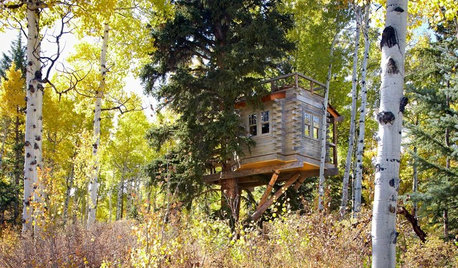Mimosa/silk tree questions
trowelgal Zone 5A, SW Iowa
14 years ago
Featured Answer
Sort by:Oldest
Comments (63)
iforgotitsonevermind
14 years agotrowelgal Zone 5A, SW Iowa
14 years agoRelated Discussions
WANTED: Silk/Mimosa Tree Albizia julibrissin
Comments (1)I've been patiently waiting for your responses ... you keep asking for new things that I have, but never get back to me. What gives?...See MoreHave beautifull Mimosa silk tree seeds
Comments (4)If any of you all live in or around the following states... DC, FL, GA, KY, LA, MA, NC, NJ, SC, TN, VA, WV you should really take a look at the link below. Albizia julibrissin (mimosa) is an environmentally-damaging exotic pest plant in those areas. Here is a link that might be useful: Mimosa/Albizia julibrissin...See Morepink mimosa(silk) tree seed
Comments (0)make a offer looking for bush or patio type tomato seed.but just make a offer looking for many other seeds and things. ricky...See MoreAre Mimosa (silk tree) that bad?
Comments (4)Growing up NYC, the tree was almost a dominant tree species in urban areas of Brooklyn and Queens County decades ago so they have been in the 'North' for a while now. I must confess I thought the trees gorgeous in bloom let alone the feathery foliage. They seem to do best in highly urbanized environments (perhaps where nothing else survived!)--similar to Ailanthus. Now that I am in a more suburban area (though still in the immediate NYC Metro Area and same gardening zone), I hardy ever see them. They are rarely planted, nice specimens are unknown to me, and they are almost never sold in local nurseries. I was told by a nurseryman a few years ago, that some virus or blight did a number of them in. The only place I still see them is along the highways, but only rarely. I don't grow one now or even find them as attractive as in the past. I know they are listed as an invasive in NJ but after doing years of weeding in a rather sizable yard, I have yet to find one growing wild. Any number of other plants (many sold in nurseries) seem infinitely weedier. Am assuming they might be a bigger problem tree in warmer winter areas of the Southeast....See Morewillyt
14 years agoUser
14 years agobrandon7 TN_zone7
14 years agoiforgotitsonevermind
14 years agoUser
14 years agoIris GW
14 years agoiforgotitsonevermind
14 years agodavealju
14 years agobrobicho
14 years agotrowelgal Zone 5A, SW Iowa
14 years agodsieber
14 years agotrowelgal Zone 5A, SW Iowa
14 years agoalexander3_gw
14 years agotav68
14 years agotrowelgal Zone 5A, SW Iowa
14 years agofamartin
14 years agoiforgotitsonevermind
14 years agofamartin
14 years agoiforgotitsonevermind
14 years agobrandon7 TN_zone7
14 years agoiforgotitsonevermind
14 years agobrandon7 TN_zone7
14 years agoiforgotitsonevermind
14 years agofamartin
14 years agoalexander3_gw
14 years agobrandon7 TN_zone7
14 years agoiforgotitsonevermind
14 years agoalexander3_gw
14 years agoiforgotitsonevermind
14 years agofamartin
14 years agoiforgotitsonevermind
14 years agodavidrt28 (zone 7)
14 years agophilinsydney1
14 years agoiforgotitsonevermind
14 years agoUser
13 years agoredheaded70
12 years agoalexavd
2 years agocecily 7A
2 years agoalexavd
2 years agocecily 7A
2 years agoalexavd
2 years agoalexavd
2 years agocecily 7A
2 years agoalexavd
2 years agocecily 7A
2 years agogardengal48 (PNW Z8/9)
2 years agoalexavd
2 years ago
Related Stories

TREE HOUSESSwaying From Sleepovers to Dinner Parties in a Colorado Tree House
Folks of all ages have it made in the shade in this fun little house, thanks to electricity, a kitchenette and a rooftop deck
Full Story
BEDROOMSHouzz Quiz: What Color Should You Paint Your Bedroom Walls?
Cool and soothing, or warm and spicy? Answer these questions and learn what hue is right for you
Full Story
FUN HOUZZHouzz Quiz: What's Your Decorating Style?
Answer these 9 questions to find out what decorating style suits you best
Full Story
HOUZZ TOURSMy Houzz: Stately Southern Charm in a Federalist-Style Home
Moss-covered oak trees, European antiques and contemporary style set off this Louisiana home
Full Story
PETS12 Stylish Solutions for Ugly Cat Furniture
Bland beige post unhappily marking your living room territory? Scratch that with rakish kitty condos, perches and staircases
Full Story
LIGHTINGSo You Bought a Cave: 7 Ways to Open Your Home to Light
Make the most of the natural light your house does have — and learn to appreciate some shadows, too
Full Story
PETSSo You Want to Get a Cat
If you're a cat lover, the joys outweigh any other issue. If you haven't lived with one yet, here are a few things to know
Full Story
DECORATING GUIDESHouzz Tour: Arts and Crafts Cottage Gets a Lively Remake
An interior designer uses color, light and historical touches to brighten up a 1920s Sydney home
Full Story
GARDENING GUIDESLet Lilac Love Flower This Spring
Whatever you bestow or receive for Mother's Day, lilacs can be an unmatched gift in the garden in May
Full Story
DECORATING GUIDESHow to Get Authentic French Style in Your Home
Move over Shabby Chic and French Provincial. These myths and realities reveal the real look of French decor
Full Story



brandon7 TN_zone7